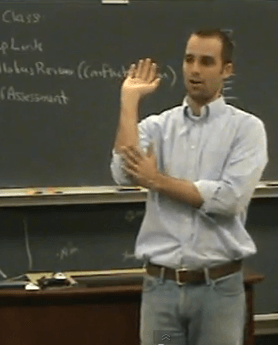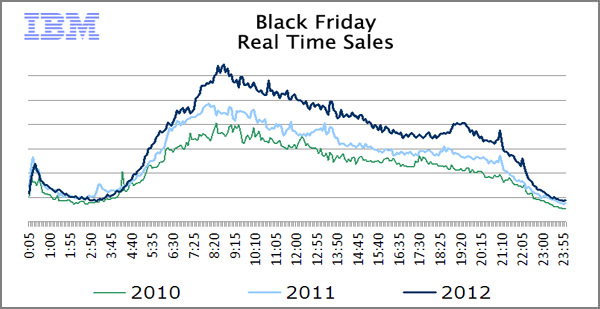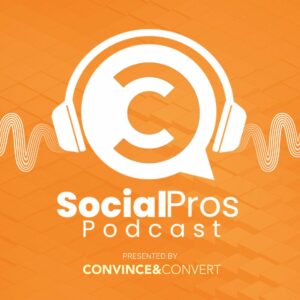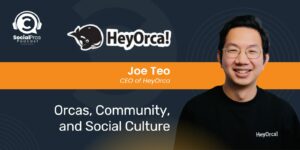Hosted By
About Social Pros Podcast:
Social Pros is one of the longest-running marketing podcasts in existence (10 YEARS and counting), and was recently recognized as the #1 Audio/Podcast Series by the Content Marketing Awards.
Our purpose? Making sure that we speak to real people doing real work in social media.
Listeners get inside stories and behind-the-scenes secrets about how teams at companies like Google, Reddit, Glossier, Zillow, Lyft, Marvel, and dozens more, staff, operate, and measure their social media programs. With 600+ episodes, the Social Pros Podcast brings the humanity of social media to the forefront, while providing incredibly useful marketing strategies that listeners can immediately implement.
Follow Social Pros on LinkedIn.
To inquire about becoming a guest or show sponsor, please email our Executive Producer, Leanna Pham, at leanna@convinceandconvert.com.
Apple Podcast Reviews:
The Social Pros podcast has quickly become a favorite in my feed! I'm consistently impressed by the engaging conversations, insightful content, and actionable ideas. I truly learn something every time I listen!
@Arlie KThis is absolutely an awesome listen for anyone in communications or social media!!
@Will31CThis podcast has become one of my staple weekly podcasts for learning about marketing! Love the conversations that they have and it's always enjoyable and educational!
@Simonstone95Love the podcast - informative, in depth and spot on for any business size.
@MissTriathlon
Tara Hunt, author of The Power of Social Networking: Using the Whuffie Factor to Build Your Business, joins the Social Pros Podcast this week to discuss the borderless world of the social web, monetizing Twitter, and why she unfriended her boyfriend on Pinterest. Read on for some of the highlights or listen below for the full […]

Tara Hunt, author of The Power of Social Networking: Using the Whuffie Factor to Build Your Business, joins the Social Pros Podcast this week to discuss the borderless world of the social web, monetizing Twitter, and why she unfriended her boyfriend on Pinterest.
Read on for some of the highlights or listen below for the full podcast.
Listen Now
Click the play button to listen here:
[podcast]http://socialpros.podbean.com/mf/web/b6qcq9/SocialProsEpisode45.mp3[/podcast]
Download the audio file:
http://socialpros.podbean.com/mf/web/b6qcq9/SocialProsEpisode45.mp3
The RSS feed is: http://feeds.feedburner.com/socialprospodcast
Find us on iTunes: http://itunes.apple.com/us/podcast/convince-convert-blog-social/id499844469
Please Support Our Sponsors
Huge thanks to data-driven social media management software company Argyle Social for their presenting sponsorship, as well as Infusionsoft, Janrain, and Jim Kukral at DigitalBookLaunch. We use Argyle Social for our social engagement; we use Infusionsoft for our email; Janrain is our crackerjack social integration company, and Jim is our guest host for the podcast (and a smart guy).
Social Pros Highlights For Your Reading Enjoyment, Thanks to Speechpad for the Transcription
A Boggsian Prelude
Jay: Your company Argyle Social was originally named such because of the North Carolina argyle uniform pattern, I believe. But now you’re no longer at Argyle Social, you’re off to do other Eric Boggs-ian things.

Eric: That is true. It’s kind of funny. People would ask us about the name of the company and it really was that we named the company after the Carolina Tar Heels basketball uniforms, and my best partner Adam Covati was okay with it.
I have ended my day-to-day role as the CEO of Argyle. The team and the investors and I are all still on good terms, and of course I wish the company nothing but continued success. I’m going to be taking some time off, reading some books to my son, and doing a bit of freelance social media and marketing and sales consulting type stuff, and kind of stepping into the great beyond. And it’s exciting to figure out what’s next.
Jay: And a new addition to the Eric Boggs family is also on the way.
Eric: Yeah, we got some really exciting news this morning that we’re having a baby girl in May. So change all around at the Boggs household for sure.
Jay: You now have two fifths of a basketball team.
Eric: Hopefully either my son or my daughter will be like some six foot, eight Lebron James-esq player and we can just be good enough with one. But the odds are long on that. I was pretty slow when I played. I was a chucker and I’m still a chucker. I was pretty good when I was in high school and I was even better when I was in college, but yeah, athleticism was never my forte.
Jay: We need to find a YouTube video of Eric Boggs shooting crazy 25 foot jump shots somewhere out there. Surely it exists.
Eric: There is actually a YouTube video of me talking about shooting a basketball.
Accumulating the Whuffie Factor
Jay: We do have an amazing guest on this week’s show Tara Hunt who was actually really, really good at social media before the word was actually coined. An absolute pioneer, a visionary in the industry, also the single most impressive person to ever come out of Saskatoon, thank you very much for being on this very special of Social Pros.
You have been kind of all-around North America in the last couple three years right? You were in Montreal and then you were in San Francisco but now back in Canada. You’ve sort of done that cross-border circumstance.
Tara: Yeah. So I sort of did a zig zag. I started in Calgary where I went to university and had my first business and then moved to Toronto and then over zig zag again to San Francisco and now in Montreal finally. So I like to do cross country moves. They tend to somehow happen for me rather than something simple like couple cities over.
Jay: Do you find that the social media community differs quite a bit from city to city? San Francisco’s probably an outlier because it’s home base to so many of the technology companies that power all this, but do you find that it’s a big difference depending on where you are at?
Tara: I guess it depends on how advanced each community is. They’re way ahead of the game in San Francisco versus other places. In general I think we’re creating an online nation where we’re coming together and sharing a lot of the same values in the way that we approach the world. And so I find a lot of the characteristics go across locations.
 Even when I’ve traveled to various conferences around the world, the people that spend a lot of time online and in social media tend to share a lot of the same hopes and dreams and frustrations as you and I in North America.
Even when I’ve traveled to various conferences around the world, the people that spend a lot of time online and in social media tend to share a lot of the same hopes and dreams and frustrations as you and I in North America.
Jay: That’s one of the premises of your outstanding book, The Whuffie Factor. If you have not read it, Social Pros listeners, you absolutely need to buy and read it. It is a foundational text in the world of social media and personal influence.
One of the premises is that if you are a good person and you area a helpful person, you will accumulate – whuffie is what you call it – that personal trust. You can be influential outside of your geography now using technologies in ways that were unthinkable, even ten years ago.
Tara: Oh absolutely. First of all, social media broke down the whole process of raising your influence and being heard by an audience of people. It gives regular people the tools and takes away any gatekeepers that previously stood in the way of us growing an audience and then, yeah, it feels like a borderless world.
There are a few differences in language around the world, of course. Recently I did research on different fashion bloggers around the world and there are really strong Asian markets of fashion bloggers, as well as Italian markets of fashion bloggers that have quite a large following in their language. We wouldn’t necessarily know about them in North America because they do not blog in English. So, they’re able to then to create a big following for themselves as well, even if they aren’t speaking the lingua franca of the web.
Social Graph vs. Interest Graph
Jay: And you were involved with fashion online with your startup Buyosphere, which is a place that people can ask for fashion advice and curate fashions using a very photocentric layout.

How do you feel about that kind of interest-based site where people are coming together based on a particular topic, in this case fashion, as opposed to people coming together on a broader channel like Facebook? How do you see that social graph versus interest graph push/pull playing out over time?
Tara: The social graph has been amazing in ways of connecting us to old friends and keeping us valiantly connected to people that we meet along the way and that we share interests with. But I noticed this many years ago when I was using Last.fm, for instance, that when it comes to personal tastes and style, that doesn’t necessarily correlate with the kind of people that you like to hang out with on a daily basis.
We hang out with all sorts of people with all sorts of different style profiles. I have a lot of friends that like to wear jeans and t-shirts and I myself am a little more eclectic, whimsical dressing. They don’t like me any less. I don’t like them any less. It’s just the way it is.
When I connect with somebody online, I’m going to want to connect with people with the same fashion tastes, the same interests that I have on that side. There are a lot of sites now that are showing how valuable the interest graph alongside the social graph, and Pinterest is one of those sites.
Jay: Well doesn’t Pinterest straddle both because it’s broad enough now that it does tap into a social graph, and it’s an interest graph? It’s sort of a collection of interests graphs that make a social graph, now that it’s getting so broad.
Tara: I haven’t done any rigorous data collection on this subject, but what I have heard anecdotally over again and over again is people saying that they’ll unfolllow their best friends because they’re “polluting” their visual stream. I myself will follow people that, I just have come across a couple pins that are beautiful. I don’t know anything about them personally, but I do love their pins and when I open my Pinterest page, it better look beautiful. I actually unfollowed my boyfriend, Carl, last week.
Eric: Tara, you’ve hit on an interesting point. I have followed people on Twitter also, but to me the thing that surprises me is how closely I’ll follow complete strangers that I’ve never spoken to in real life because of some sort of overlap that we have.
Jay: The overlap is topical, right Eric? I’ve seen data that shows that a significant percentage of many people’s Facebook connections are people you went to high school with, people you went to college with, or people in your town.
And so it’s that shared history – or to some degree shared place – that connects people together on Facebook, whereas to some degree Twitter, definitely Pinterest, and certainly more micro-interest networks like Buyosphere are not about those historical connections but more about, “What can you do for me today?” And that’s how you ended up unfriending your own boyfriend.
Eric: Even taking that a step further, I read a personal blog post about Facebook being this anchor of some past identity because you’re there with your friends from high school or your friends from your hometown where you were a different person than you are today. They know the you of the past, whereas on these newer sites there tends to be more of a create-as-you-go. You are your last 30 tweets or your last 30 pins. That creates a different dynamic too.
Tara: I look at it similarly but a little bit shifted time wise. I said, I wrote a post on this a little while ago and I said, “Facebook is who you are but Pinterest is who you aspire to be.” So, people will pin like these gorgeous beach houses that they’ll laugh in the comment and say, “Okay. I’ll never be able to afford this but, oh my God. This is my dream.” Whereas on Facebook, you’ll be talking about your current renovations or you just got engaged or what you ate for dinner at that fancy restaurant. That sort of thing.
Twitter: A Social Force and A Public Utility?
Jay: What is your take on what Twitter has done so far to monetize their system? Where they’re going and whether or not that’s going to be a plus or a minus for users?
Tara: This is something I actually have thought about a lot, actually from the beginning because I’ve been a Twitter fan since before it had vowels. I’ve been a big fan of the medium and the simplicity of it for a long time. But, I’ve always wondered because I know it’s an expensive business to run, even though most of the data is text based, even as simple as it is. And their efforts to monetize it, through sponsored tweets, sponsored hastags, the various different branded, the branded subject pages.
There is a lot of potential for making money, but because it’s such an expensive business to run, there’s a ceiling to their potential on making money. But there doesn’t seem to be a ceiling on the amount of money that they’re going to be spending to make that business continue to function.
When Jay and I started talking about being on this podcast, I’d just crunched a bunch of numbers, and no matter how I was crunching the numbers, Twitter was never going to be the size of business that Facebook is. But the thing is it has a bigger social impact than Facebook has.
You don’t need to have a smartphone to interact with it. It’s aided revolutions around the world. The social impact is humungous but maybe they, internally, know a bit better about what they can do. Somebody on Twitter suggested that they embed affiliate links, but I’ve done a lot of research on that side of things, and even if they were to parse out every single product that is linked and were able to collect certain affiliate revenue from it, it still wouldn’t sustain the network.
Jay: It’s interesting. You talk about the impact of Twitter being so much bigger than the actual user group, and we studied that in the Social Habit research. 54% of Americans are on Facebook, 10% of Americans are on Twitter, yet awareness of the two is almost exactly the same. It’s this amazing dynamic where Twitter’s power isn’t so much how many people use it; it’s who uses it.
The fact that the traditional media and the new media use Twitter as a news source and don’t think twice of it. They quote tweets as if they actually interviewed somebody, and that is a really interesting finding that has put Twitter into the fabric of the collective consciousness in a way that Facebook really has never been. Partially that’s because tweets are all public, and not all Facebook posts are public. I think it’s a really interesting dynamic.
Twitter Lawsuits Begin
Jay: The PeopleBrowsr folks have filed a lawsuit against Twitter saying that Twitter has changed the rules of access to the API. It happened a few weeks ago and impacted a lot of third party Twitter clients and data providers.
PeopleBrowsr says, “This is not what we signed up for. You’re in violation of our agreement,” and has successfully gotten a preliminary injunction to prevent Twitter from going forward with all of those API changes. What do you think about that Eric, as somebody who is formally in the business of using Twitter’s API to help third parties?
Eric: It’s not surprising at all to have something like this transpire because, in part, the Twitter API was the wild, wild west for a very long time. When you raise the amount of capital that Twitter has raised, and there is impetus to figure out ways to make lots of money to return that capital to those investors and capitalize on the opportunity, you have to make hard decisions.
The API restrictions that Twitter has put in place are actually good for the developer community, and they’ve gone about it in as good a way as they possibly could, considering the circumstances. To see something like this happen is a natural outcome from the perfect storm of developers and companies with a make-a-lot-of-money mandate.
I imagine there have been a number of conversations that have happened behind the scenes that led to this. I don’t know how long this injunction will hold. It doesn’t seem reasonable, to me, that a court can tell Twitter they have to provide their service to some customer or partner.
Jay: Interesting. It goes to what Tara was just saying that if they want to continue to monetize, one of the ways they’re going to try to do that is to make the display of tweets more consistent across different platforms and across multiple third-party clients. In the “wild west” everybody took their own spin on how to display tweets. If you’re going to start inserting banners or even affiliate links, you have to have greater consistency in how your product is displayed. That’s why they’re trying to pull in the borders on what can and cannot be done.
Eric: That applies with third-party Twitter clients. That is 100% the rationale behind the restrictions: if there are eyeballs outside of Twitter, Twitter can’t monetize them. That’s why there are restrictions on consumer clients. With PeopleBrowsr this is a data issue. One of the unspoken revenue streams for Twitter is their fire hose and their data products. Some of it they sell directly. A lot of it they sell through resellers like Gnip or DataSift.
Jay: It’s so interesting that this business has become a business. Tara, you think about when you wrote The Whuffie Factor and how it was much more about the social and less about the media. Now, we’ve got tens of billions of dollars at stake, and now you’ve got mergers and acquisitions and lawsuits, and it’s a different environment out there than it was even five years ago. What do you think about that?
Tara: I can’t remember the exact day, but I do remember I was on a trip to a conference, and I don’t have a TV at home, so one of my little treats is when I get into a hotel room, the first thing I do is flip on a TV.
I’m sitting there working away on my presentation, and the news anchor says, “And you can follow me on Twitter and ask me questions at blah-blah-blah.” He was the first CNN guy on Twitter. It was in 2007-8, but I remember looking up from my laptop and going, “Holy shit. This is happening. Everything I’m going to be talking about in my book is going to happen.”
We prophesied this as a group of activists, social web people. “If companies don’t pay attention, they’re going to fall behind and they’ll really lose out on this new economy,” when we believed it, but when you see it happening.
Jay: Now there’s evidence.
Tara: “Holy crap. This is happening.” To have Rick Sanchez…
Jay: He was the guy who got, I’m pretty sure he did get tased.
Eric: The first one to put his Twitter handles on the screen and say, in the next segment I’m going to answer your questions. So I asked questions and I logged onto Twitter and I saw that people were like, “Holy crap! Rick Sanchez, CNN, this is so cool! This is my question.”
Jay: Every show has a hashtag. It’s a social layer, and so many times you’re doing whatever you’re doing and then there’s a social layer. It’s so interesting.
Tara: Yeah, and it’s like if you don’t tweet then you’re, like, dinosaur age. It’s just everybody and their dog is a social media guru. It’s like water, and I’m going to come around to a crazy suggestion: in the future this stuff will be like a public utility.
So I’m afraid for the future of Twitter, and I guess I’m saying they can make money but they’ll never make enough money in my estimation. Maybe I’m missing something but they’ll never make enough money to IPO like Facebook.
Their valuation is too high for just about anybody to buy. But we need Twitter. Twitter is like air for us and become more and more of a public utility. We just watched Internet be cut off in Egypt when they were having riots again to prevent a revolution from happening because they knew the power of these networks. I don’t know. This is my crazy idea.
Social Media Stat of the Week: Social Sales Account for <1% of Online Sales Black Friday, Cyber Monday
Eric: We’ve been talking about commerce and revenue quite a bit lately, and this week will be no different. IBM does an annual report around Black Friday and Cyber Monday every year. The takeaways are this: social sales on Black Friday (these are online sales from shoppers referred from Facebook, Twitter, LinkedIn, and YouTube) generated .34%
of all online sales on Black Friday. The statement there is that Black Friday is all about retail and in-person call to action.
For Cyber Monday social sales, shoppers referred from Facebook, Twitter, LinkedIn, and YouTube generated .41% of all online sales. That is when all of the calls-to-action, transactions, and specials are happening online. These are really, really small numbers.

Jay: I wonder what the e-mail percentage would be. I’m thinking quite high actually.
Tara: They have mobile data broken out by a handful of different verticals – apparels, home goods – but they do not share data related to e-mail.
Jay: It’s a small number, but it doesn’t really surprise me. This belief so many people have that social media is inherently a customer acquisition transactional vehicle is silly. It’s not; it’s a loyalty and retention vehicle.
Most of the people who are going to follow your brand in social are people who are already have a relationship with you. You don’t go to Facebook and say, “I have no idea who these guys are, I should like them.” You like on Facebook what you actually like in the real world, and Twitter is the same. So it’s not top of the funnel because you already have a relationship, and it’s not bottom of the funnel because it doesn’t drive commerce.
Social media is the ultimate mid-funnel relationship builder, which ideally is going to get people to purchase more often, get people to purchase at a higher average rate, and ideally turn customers into volunteer marketers – so goes the theory. All of that is somewhat difficult to model, not impossible but difficult. It actually surprises me a little bit coming fom IBM – a company that most of us respect and has a lot of social participation. That methodology of how many sales came from a tweet is a little bit spartan from a mathematical perspective.
Social Pros Shoutout
Tara: Nilofer Merchant has a new book out, 11 New Rules for Creating Value in the #SocialEra. It’s really fantastic. I think it’s required reading for every single CMO, CEO. It’s the level of reading for them, too, unlike my book. My book was written for the person that was already converted. Her book is good for the person that needs a little nudge.
Kelly Hoey is another one. She runs Women Innovate Mobile in New York City, as well as a bunch of other really cool stuff in the startup world. She really puts her money where her mouth is when it comes to helping women start companies online and in the mobile space. I’m a big fan of her work, and she’s also a hoot. She’s a fellow Canadian and lots of fun to hang out with. If you’re ever in New York tweet @jkhoey, and she will probably come meet you for a drink.
Jay: Done.
Tara: The last person who also is well known in my sphere, but may not be well known in your sphere, is Deanna Zandt. She used to be @randomdeanna – I have the original Twitter names of everybody etched into my brain. When they actually use their real name it confuses me.
Deanna has tirelessly been working in the non-profit space. She had a book a couple of years ago come out called Share This! How You Will Change the World with Social Media. She does now a regular show on NPR with Baratunde Thurston who wrote How to Be Black. Deanna’s one of those people that works tirelessly to save the world and not necessarily to line her own pocketbook. I just admire her so deeply. Those are my big three.
Jay: That’s a terrific list. Well done. You have risen to the challenge as I expected. Who do we have on next week’s big Social Pros show?
Eric: We have Ekaterina Walter from Intel.
Jay: Speaking of new books, Ekaterina’s from Intel and also has a new book coming out first week in January called Think Like Zuck about how companies can use lessons from Mr. Zuckerberg to build their own business. They got a lot of momentum behind that title at McGraw Hill, who’s her publisher, so I’m looking forward to learning some lessons from the pages of that, and also she’s got tons of stuff she’ll share with us about how Intel does social media. That will be a good show.
See you next week!







